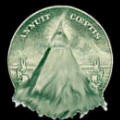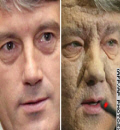Research into artificial atoms could lead to one startling endpoint: programmable matter that changes its makeup at the flip of a switch.
The hardest thing you can ask them is how old they are. The question seems to rock them back, to give them pause. "I guess I'm 38," one of them tells me uncertainly. "I must be 54," another answers, after even longer deliberation. It's not that these men are slow, it's that they're physicists. And they're involved in a new research area as promising as it is strange, so if they seem a little distracted, well, c'est la vie. Despite modesty and caution so deeply ingrained that it might well be genetic, they also project an air of barely contained excitement. They're building the future, and they know it.
To understand how and why, it helps to be at least passingly familiar with the areas of nanotechnology and micro-electromechanical systems. Both offer great promise in creating forms of matter that are substantially more capable than anything nature has to offer. But nanotechnology faces inherent limitations in communications, power, and materials distribution, while MEMS have short operating lifetimes and will always have trouble creating precise micro- and nanostructures other than simple chemicals.
There will of course be myriad applications, some of them quite amazing, but by the time they find their way into the real world, both nanotech and MEMS may wind up looking less magical than even a humble television screen, which after all can change its appearance instantly and completely. But there may be a truly programmable substance in our future that is capable of changing its apparent physical and chemical properties as easily as a TV screen changes color. Lead to gold, baby, on demand. Call it programmable matter.
The keys to this phenomenon are found in a mysterious realm called the mesoscale. At the nanoscale (10-9 meters) we find very tiny, very simple objects, like the water molecule, that possess a high degree of symmetry and can be modeled precisely using the closed-form equations of quantum field theory. The behavior of a simple molecule can always be predicted. At the microscale (10-6 meters), where we find larger objects like micron-wide blood cells or silicon gears, these quantum effects blur and average across billions of particles into the familiar smear we call classical physics. You know: mechanics, electricity, stuff like that. Again, easily modeled and predicted, because the individual particles can be ignored, and their aggregate behavior is completely predictable.
But these scales are separated by three orders of magnitude, and in between them lies the mesoscale (from the Greek mesos, or middle), an area largely uncharted in both theory and experiment. The study of mesoscale effects is a key aspect of condensed-matter physics, which Britannica defines as "the study of the thermal, elastic, electrical, magnetic, and optical properties of solid and liquid substances."
It is here, in this scientific hinterland, that we find Marc Kastner, head of the physics department at MIT; Charles Marcus, physics professor with Harvard's Center for Imaging in Mesoscale Structures; and Howard Davidson, distinguished engineer and "quantum mechanic" at Sun Microsystems.
Their specialty: mesoscopic semiconductor structures with bizarre new properties.
Tuning Up the
Semiconductor
Most materials are either conductors, which permit the free flow of electrons, or insulators, which resist it. Semiconductors are insulators capable of conducting electrons within a certain narrow energy band - a useful trick that makes integrated circuits and other electronics possible.
The electrical properties of a semiconductor like silicon are fixed by the laws of physics, but in a process known as doping, very small and very precise amounts of another material can be scattered through the crystal lattice. Often, this doping is controlled almost to the level of individual atoms, and typically about one dopant atom is added per million atoms of substrate. This tiny impurity can wreak large changes in a semiconductor's behavior, so that, for example, room-temperature electrons have a good chance of jumping up into the conduction band when voltage is applied.
Silicon doped with electron donor atoms such as phosphorus becomes an N, or negative-type, semiconductor, which contains one excess electron for every atom of dopant. These excess electrons have nowhere to bind, so they flow easily through the material, just as the more numerous excess electrons do inside a conductive metal.
Doping with electron borrowers like aluminum produces a P, or positive material, which conducts "holes," or spaces where an electron isn't. It seems counterintuitive, but electron holes can be manipulated and moved around as though they were positively charged particles. The analogy is that little puzzle where you slide the squares around to unscramble a picture or a sequence of numbers - you rearrange the puzzle by moving the hole where you want it. Anyway, with P-type silicon you get one extra hole per atom of dopant, meaning that a small, precise number of excess electrons can be absorbed by the material, sharply inhibiting their free flow.
This may sound rather abstract, but it's a trillion-dollar factoid: A P layer adjacent to an N layer creates a structure known as a P-N junction, which is a kind of electrical valve or gate that permits electrons to flow easily in one direction but not the other. This effect is critical in electronic components such as diodes, LEDs, rectifiers, and transistors. In fact, the latter half of the 20th century was built almost entirely on P-N junctions; without them, we would not have the compact computers and communications devices that have made numerous advances possible.
Page >1 >2 >3 >4 >5 >6 >7 < Programmable Matter
From wired Magazine Issue 9.10 Oct 2001
Wil McCarthy (wmccarth@sprynet.com) , an occasional rocket scientist, is the author of numerous works of science and science fiction, including Bloom and The Collapsium. Some portions of this piece were adapted from an article that will appear in Analog magazine.



.jpg)

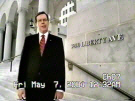

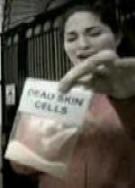




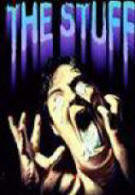
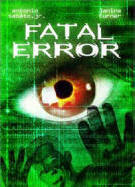
.jpg)













